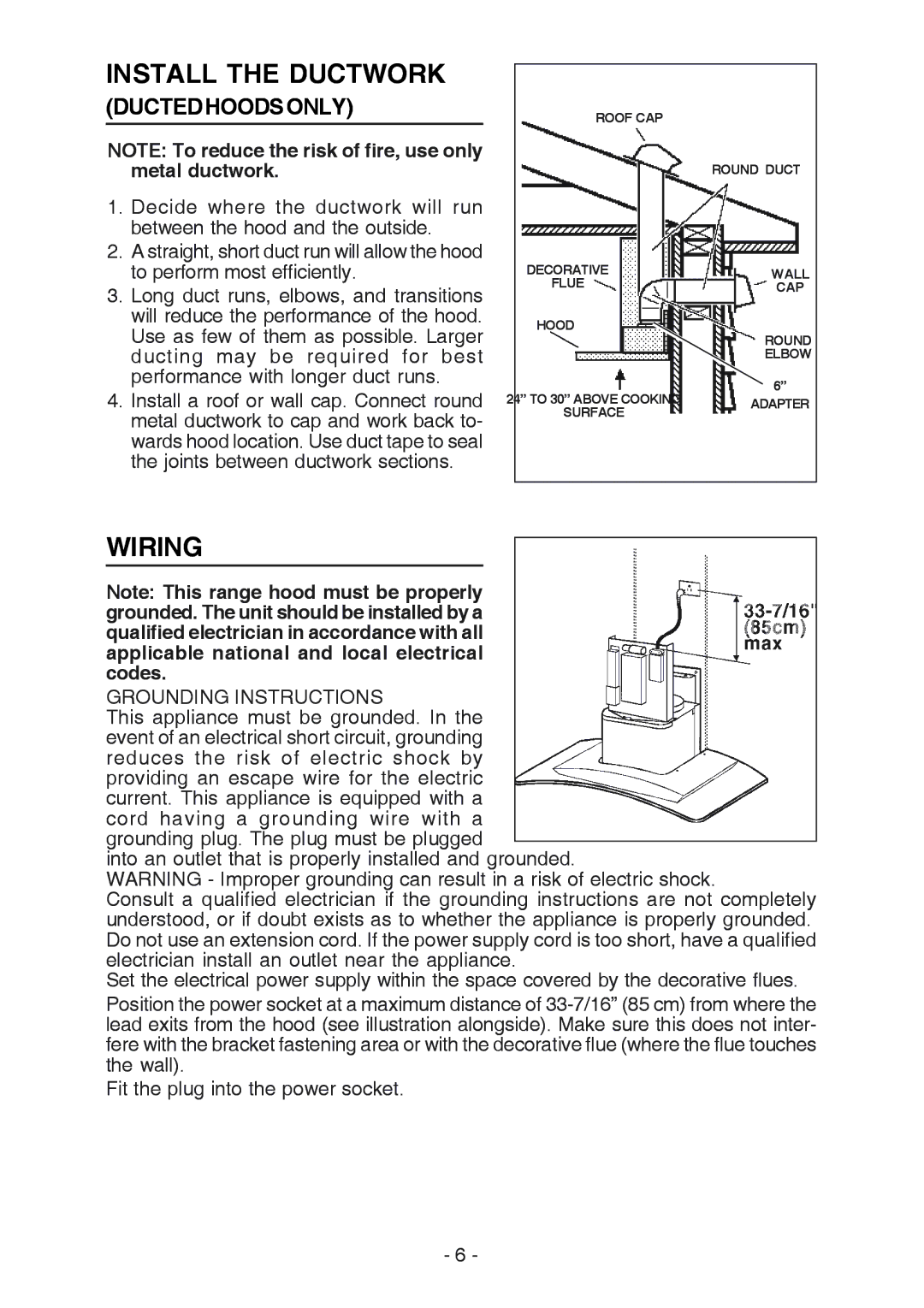
INSTALL THE DUCTWORK
(DUCTEDHOODSONLY)
NOTE: To reduce the risk of fire, use only metal ductwork.
1.Decide where the ductwork will run between the hood and the outside.
2.A straight, short duct run will allow the hood to perform most efficiently.
3.Long duct runs, elbows, and transitions will reduce the performance of the hood. Use as few of them as possible. Larger ducting may be required for best performance with longer duct runs.
4.Install a roof or wall cap. Connect round metal ductwork to cap and work back to- wards hood location. Use duct tape to seal the joints between ductwork sections.
ROOF CAP
ROUND DUCT
DECORATIVE | WALL | |
FLUE | ||
CAP | ||
| ||
HOOD | ROUND | |
| ||
| ELBOW | |
24” TO 30” ABOVE COOKING | 6” | |
ADAPTER | ||
SURFACE | ||
|
WIRING
Note: This range hood must be properly grounded. The unit should be installed by a qualified electrician in accordance with all applicable national and local electrical codes.
GROUNDING INSTRUCTIONS
This appliance must be grounded. In the event of an electrical short circuit, grounding reduces the risk of electric shock by providing an escape wire for the electric current. This appliance is equipped with a cord having a grounding wire with a grounding plug. The plug must be plugged
into an outlet that is properly installed and grounded.
WARNING - Improper grounding can result in a risk of electric shock.
Consult a qualified electrician if the grounding instructions are not completely understood, or if doubt exists as to whether the appliance is properly grounded. Do not use an extension cord. If the power supply cord is too short, have a qualified electrician install an outlet near the appliance.
Set the electrical power supply within the space covered by the decorative flues.
Position the power socket at a maximum distance of
Fit the plug into the power socket.
- 6 -
